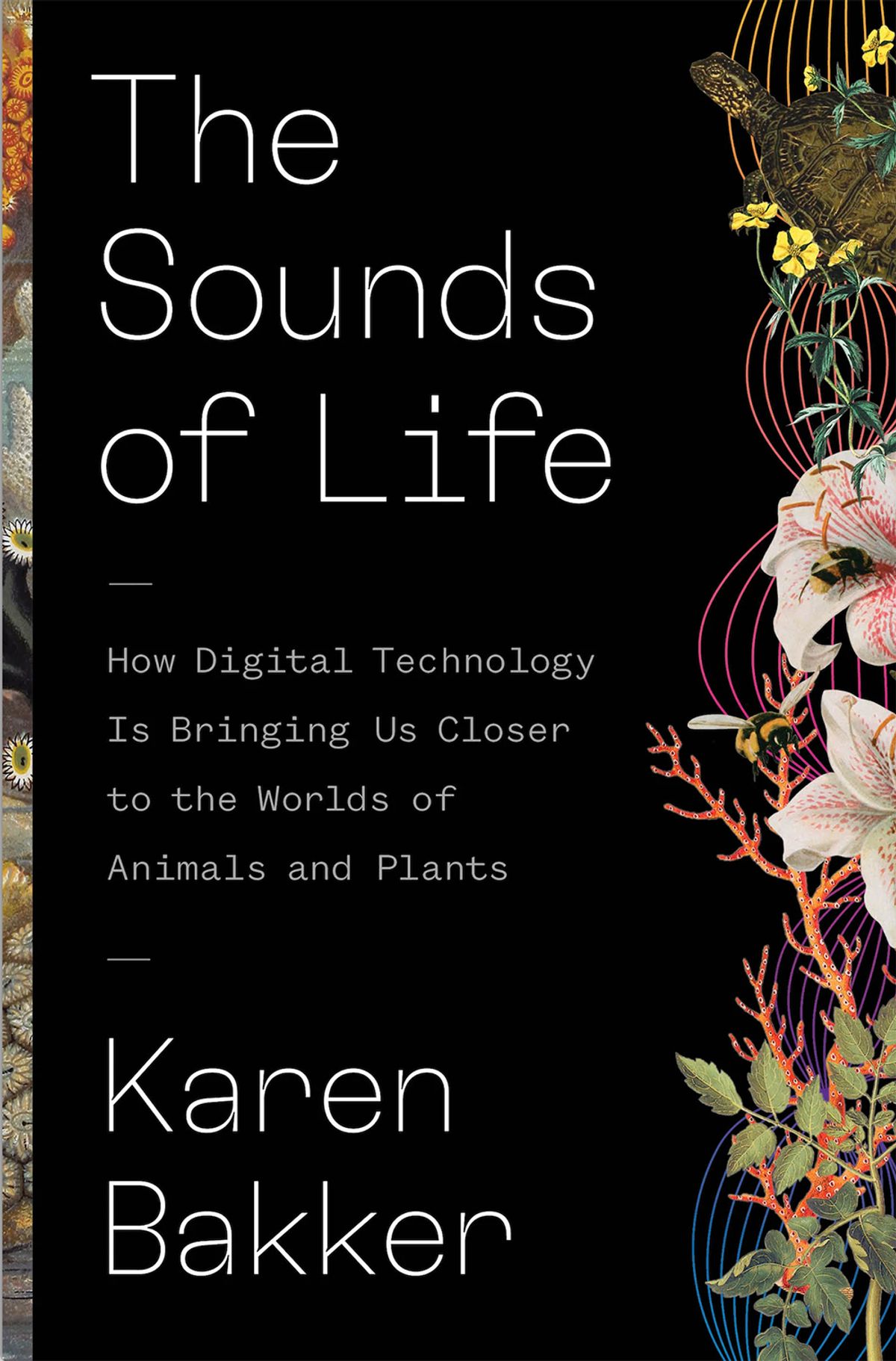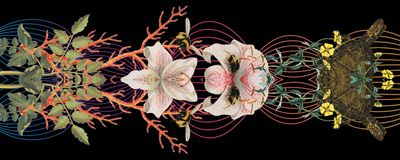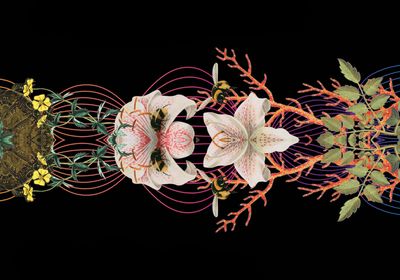ABOVE: Modified from the cover of The Sounds of Life
In the spring of 2020, as COVID-19 lockdowns spread across the globe, University of Tennessee ecologist Elizabeth Derryberry headed out into San Francisco’s Presidio neighborhood. In the uncanny quiet, she listened to male white-crowned sparrows, whose beautiful songs start with a long clear whistle, followed by a fast series of sweeping notes and trills. How would the birds, she wondered, react to the unusually muted streets? She carried with her a bioacoustics recorder, a digital listening device the size of a smartphone, aiming to collect data to answer that question.
Birdsong is vital for some birds’ survival. By singing their songs in unique dialects, male songbirds can simultaneously provide information to potential reproductive partners and keep rivals at bay, particularly during mating season. Compared to their rural conspecifics, urban sparrows tend to sing fewer, louder songs with reduced complexity and fewer trills; they also exhibit higher aggression and levels of stress hormones, lay fewer eggs, and produce smaller nestlings. But in the newfound quiet of a world beset by a viral pandemic, urban sparrows’ songs grew more complex, Derryberry found. The trills reappeared, rapid and intricate. In the absence of competing noise, their songs traveled twice as far, a boon to mating success. In contrast, rural birds in nearby Marin County, where noise levels did not vary significantly during lockdowns, showed no difference in their songs before and during the pandemic.
Listening to nature is an ancient art. But Derryberry is one of a new generation of scientists that have begun listening to nonhumans using digital bioacoustics recorders—inexpensive, portable, and automated—to record sounds in remote locations, and also to capture sounds outside the range of human hearing, from the infrasonic rumbling of whales and elephants to ultrasonic sounds from bats and dolphins. When combined with artificial intelligence algorithms that can analyze the recordings for sound patterns, these devices function like powerful prosthetic organs, extending human perception beyond our limited sensory capabilities. I take readers on a tour of this research and the aural insights it has uncovered in my latest book, The Sounds of Life.

As a species predominantly dependent on sight, humans sometimes have trouble imagining the power and richness of sound. But across the living world, sound is more universal than visual information. In the depths of the ocean, sound travels farther than light; aquatic species often hear better than they can see. Even on land, sound transmits in the middle of a pitch-black night, and can be heard from any angle or sensed as vibrations in the earth. Sound ecologist Bernie Krause frames this as Earth’s glorious orchestra, a continuous sounding of both living and nonliving entities, much of which cannot be heard by the unaided human ear.
By eavesdropping on nature’s chorus, scientists have discovered evidence of the universal importance of sound to living species across the tree of life. Many more nonhuman animal species use sound to communicate, in much more complex ways, than scientists previously understood. Bats beg and trade favors for food, and quiet themselves as they socially distance while ill, “produc[ing] fewer contact calls that attract affiliated groupmates.” Bees hiss when anticipating danger, use unique buzzing signals to describe the location of distant food sources with astounding accuracy, and use specific signals that distinguish different threat levels posed by specific predators. Mother whales whisper to their babies to hide their communications from predators. In some turtle species, embryos synchronize their collective moment of birth by making sounds through their shells, before they’ve even hatched. Dolphins call each other by individual names (their “signature whistles”) and will respond to recorded playbacks of those names. These findings challenge the outdated assumption that complex communication and language are unique to humans.
See “Embryonic Eavesdropping: How Animals Hear and Respond to Sound"
Perhaps most surprising; Species without ears, or any apparent means of hearing, also sense and respond to sound. When dispersed in the open ocean, fish larvae and larval coral (the latter creatures only a few millimeters in size, with rudimentary or no central nervous system) sense the sounds of their natal reefs to swim back home. And in response to the sound of buzzing bees, flowers flood with sweetened nectar, as if in anticipation. The natural world is engaged in a continuous conversation, to which humans—until recently—have been largely oblivious.
But an emerging appreciation for the biological importance of sound has led to new strategies for environmental conservation. Scientists have successfully used bioacoustics to regenerate coral reefs. A citizen science movement has sprung up: crowdsourcing data, taking soundwalks, and tuning in on apps like Orcasound that enable anyone to listen to nature, anytime, anywhere.
See “Scientists Use Sound to Attract Baby Oysters Back to the Reef”
Scientists are also using bioacoustics, combined with artificial intelligence, in an attempt to develop translation devices. Researchers are creating dictionaries in Sperm Whale and East African Elephant, while others are building robots that successfully communicate commands to honeybees. A zoological version of Google Translate may even be on the way. This raises ethical questions: Will we use our newfound translation ability to further dominate or domesticate other species, or rather to protect them? Will we develop a new sensibility, a new way of relating to other species as nonhuman persons, or kin? And why would they want to hear what we have to say?
In the midst of this debate, the urgent need to deal with noise pollution has become ever more apparent. Machine and industrial noise increases stress, disrupts embryonic development, and can kill organisms outright. Negative effects of noise have been documented in plants as well as animals. In humans, too, chronic noise pollution is associated with increased health risks, including cardiovascular morbidity and mortality, developmental delays, and dementia.
See “How Environmental Noise Harms the Cardiovascular System”
Quieting the human din is one of the major challenges of our time. The silver lining: Noise pollution abatement has immediate, positive, and significant results. Proposed regulations to limit noise pollution could have an enormous benefit. We have much to gain—and to learn—as we begin listening anew to the natural world.
Membership Open House!
Enjoy OPEN access to Premium Content for a limited timeInterested in exclusive access to more premium content?



